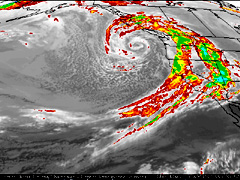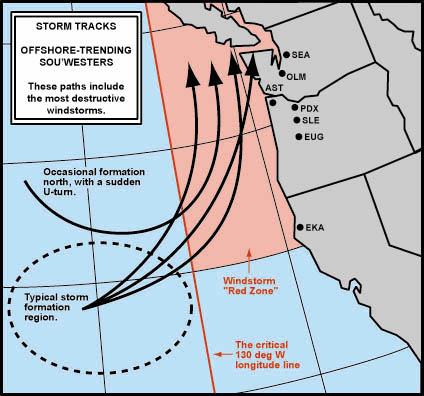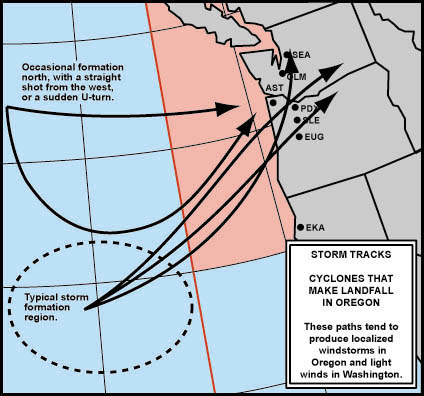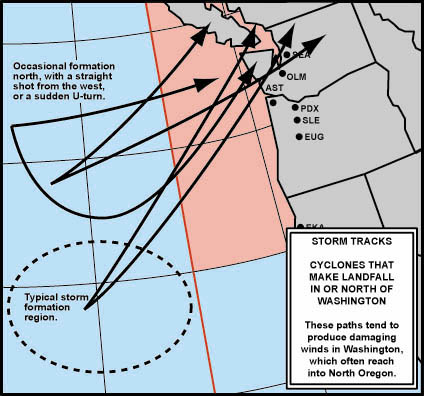|
The above storm is a very potent form of midlatitude cyclone. Many have struck the West Coast within the relatively short period of meteorlogical record. These systems can match a Category 3 hurricane in both minimum central pressures and sustained wind speeds. Such storms have a reach far beyond that of a typical hurricane: they can throw a cold rain into the Alaska Panhandle while at the same time pummel the San Francisco Bay Area with a warm, saturated gale. These tempests are killers, and can cause damage into the hundreds of millions, even billions. The focus of these web pages is on midlatitude cyclones; though, as weather and climate contain varied and diverse phenomena, other types of events are also examined.
This website is here to dispell certain weather myths. There seems to be an idea that severe weather somehow doesn't strike the Pacific Northwest. This seems to be largely an eastern misconception. For example:
The March 12-13, 1993 "Storm of the Century" has been touted as the strongest extratropical storm to strike the United States in the 20th century. This appears wrong on a number of counts. An argument could be made that the great Columbus Day Storm of 1962 holds the "Storm of the Century" title, and for good reason. Sure, the 1993 storm produced more lowland snow; the Columbus Day Storm was a relatively warm system and snow just didn't happen, save maybe at the highest elevations. However, let's talk wind. Wind generally causes more damage than snow. Sure, when snow gets deep enough, it can become a problem for roofs. However, for much of the region that saw snow during the 1993 event, accumulation just didn't reach such proportions; 6-10" was common.
Of the storms on record, only eastern hurricanes, possibly some wake low events, and some thundergusts match the strength of winds reported during the Columbus Day Storm. I checked the Storm Data for the March 1993 event. The supposed "Storm of the Century" just doesn't come close to the peak gusts officially recorded during the Columbus Day Storm. Generally, for March 1993 the peaks were in the range of 50 to 70 mph, with a few ranging up to 75 to 83 mph. Most of the latter readings happened at coastal stations. For the Columbus Day Storm, official wind gusts reached 127 mph in the Willamette Valley. Many stations had gusts between 75 and 100 mph, and this includes quite a few locations that were inland (including Corvallis). So much for the storm of 1993!
One of the main foci of the case studies below is to demonstrate severe weather events in the Pacific Northwest.
|




